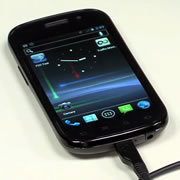
With the advent of powerful wireless devices over the last several years, the delineation between activities typically reserved for the home computer and the mobile device has blurred considerably. The new opportunities for “always on” access have significant sociological impacts with respect to communication between individuals and the communities that they form.
The new network access inspires a set of related fascinating research questions. What effect does pervasive, wireless network access have on the social interactions of young adults, in particular college-aged students? Conversely, what impact would a better understanding of these social interactions have on the underlying wireless and wired networks? What is the relationship between the two systems, i.e., does the wireless network truly drive social interactions or do social interactions drive demand on the wireless network?
The intellectual merit of the proposal will be to gather high quality, long-term social network and behavioral data and then to analyze the data from sociological and technical perspectives. The work will provide two hundred and fifty smart phones to a diverse cohort of first-year University of Notre Dame undergraduate students. The infrastructure will build on lessons from previous efforts at MIT to create a second-generation system for the purpose of tracking the social ties, communication patterns, and behaviors of the cohort over two years. The broader impact of the work will include inter-disciplinary contributions for both computer science and sociology. The work will make available a tremendous body of anonymized data to improve both social and network performance research.